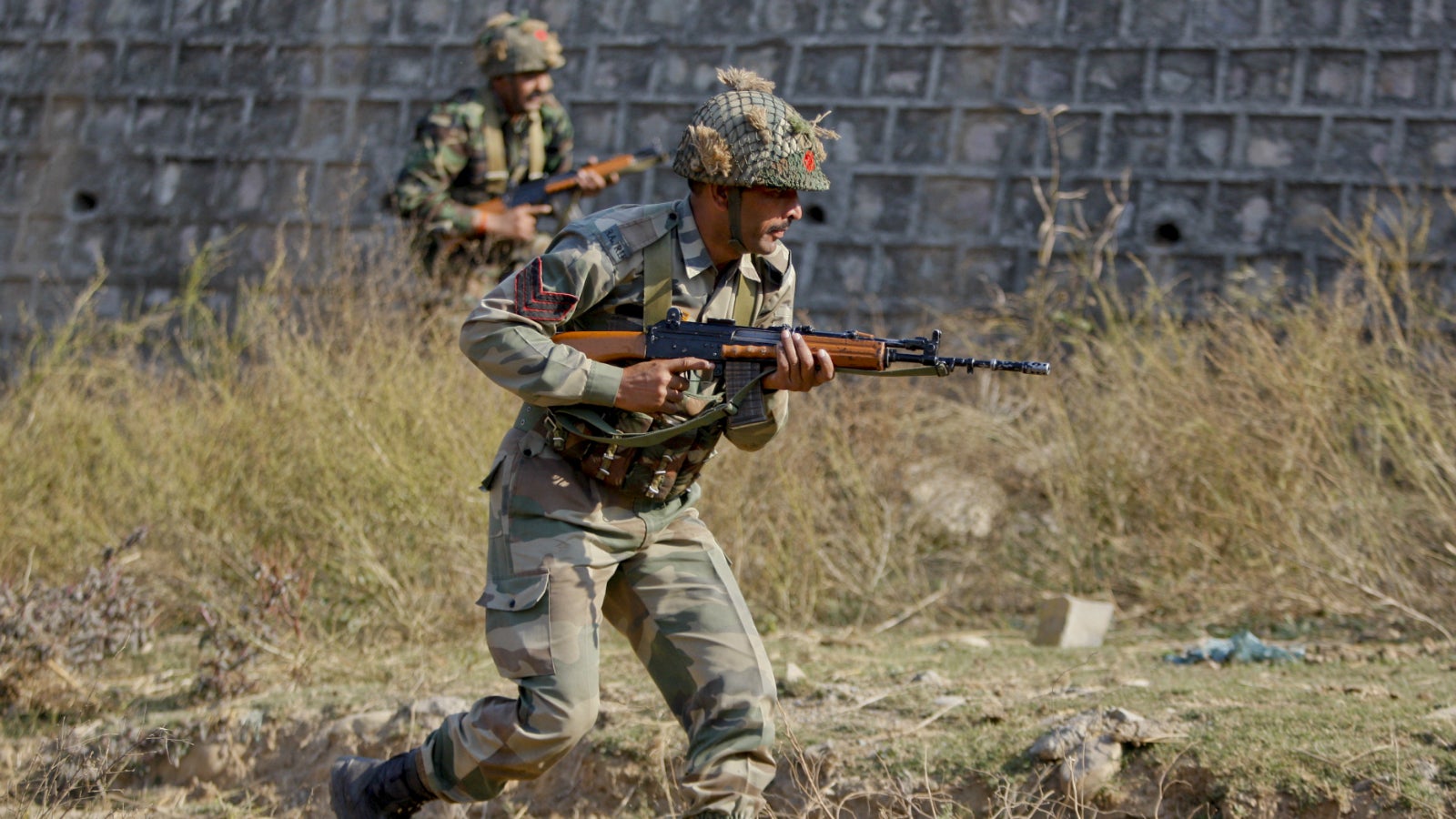It’s time India stops blaming Pakistan for every terror attack on its soil
Narendra Modi’s visit to Lahore on Dec. 25 was heralded as a historic moment in India-Pakistan relations. But the deadly attacks on the Pathankot military base on Jan. 2, and the Indian consulate in Afghanistan’s Mazar-i-Sharif on Jan. 3, have emerged as major spoilers. The bonhomie achieved on Christmas Day is dissipating fast.


Narendra Modi’s visit to Lahore on Dec. 25 was heralded as a historic moment in India-Pakistan relations. But the deadly attacks on the Pathankot military base on Jan. 2, and the Indian consulate in Afghanistan’s Mazar-i-Sharif on Jan. 3, have emerged as major spoilers. The bonhomie achieved on Christmas Day is dissipating fast.
The developing consensus in the Indian media is that Pakistan-based jihadists—this time allegedly Jaish-e-Mohammad in Pathankot, and the Taliban in Mazar-i-Sharif—have acted to sabotage the Modi-Nawaz Sharif rapprochement. And the underlying assumption is that these attacks could not have been carried out without the support of Pakistan military’s intelligence network.
While one cannot deny the historical civil-military split in Pakistan, the wars, and perennial conflict, the blanket view that the country’s military is intent on spreading terror and destruction in India must be challenged.
Since 2009, 31 military installations, including airbases and intelligence headquarters, have been attacked by the militants affiliated with the Al Qaeda, the Pakistani Taliban, and its affiliate and the sectarian killer group, Lashkar-e-Jhangvi (LeJ). The attacks on Pakistan’s naval and air bases have led to the destruction of expensive equipment and loss of military personnel. If terrorism is sponsored singularly by Pakistan’s intelligence networks, then it would be irrational to believe that the military attacks its own installations.
There seem to be few takers of Pakistan’s position as a “victim of terrorism.” The facts, however, cannot be brushed aside. More than 80,000 Pakistanis, including 6,300 or more security personnel, have been killed during the past decade.
The reality is that the militias since the Afghan jihad have fragmented, made further worse by the Al Qaeda’s operations for more than a decade. Pakistan is fighting this menace—mostly a result of continued regional conflict and its past security policies—and trying to eliminate these networks. Official statements from Pakistani prime minister Nawaz Sharif and the military leadership, led by Army chief General Raheel Sharif, have indicated that the erstwhile distinction between good and bad Taliban no longer stands. Skepticism has been aired about these pronouncements since much more needs to be done to undo the militant infrastructure. But Pakistan is moving in that direction. In recent months, the state has eliminated the LeJ leadership, and several groups that comprise the Pakistani Taliban.
On top of that, Sharif would not have fixed an informal meeting with Modi without taking the military into confidence. He has avoided direct confrontation with the military in his third tenure. Reuters, citing security sources, had reported in December that the military paved the way for reviving stalled India-Pakistan dialogue process. The appointment of a retired general as national security advisor (NSA) provides the military a direct stake in the dialogue with India.
The rogue elements within the security apparatus that aided terror groups in the past have not gone unnoticed. Attacks on Pakistan’s military, and even the former president Musharraf, have happened with collusion at lower levels. But it is too early to conclude in that direction. Also, things have changed since 2008 Mumbai attacks. The incentive to escalate conflict with India is perhaps at its lowest—not because there has been a fundamental shift in the way Pakistani state works or imagines its nationalism. The regional dynamics necessitate this change. Pakistan of 2015 is aspiring for economic integration with China’s “One Belt, One Road” programme; and aiming to become a transit hub of energy trade.
Perhaps more than the West, it is China’s leverage with the Pakistan military that is driving the effort to de-escalate. Both China and Russia—tackling Islamist insurgencies at home—want Pakistan to hasten its march into a post-jihad moment and ensure that the Islamic State does not find a base in Afghanistan or Pakistan.
This is why it is difficult to endorse the Sharif-sabotaging-the-other-Sharif theory.
Having said that, Pakistan’s civil and military leaders have to find a solution for the jihad industry that has grown—with state patronage—around the Kashmir issue. How elaborate it is, and how much of it is under the state control are questions that must be addressed now. Non-state actors must not be allowed to fuel conflict between nuclear nations. In South Asia 2060: Envisioning Regional Futures, Stephen Cohen had indicated one of the “plausible” future scenarios as one where non-state actors spur a nuclear conflict leading to a shattered region. Militant groups causing cross-border attacks have to be stopped by Pakistan and India through cooperation and dialogue. If the talks collapse, it would mean that terrorists achieved their objective. This is what Modi and Sharif need to deliberate in the days to come. At the very least, the NSAs should reopen communication channels and continue from where they left in Bangkok a month ago.
We welcome your comments at [email protected].